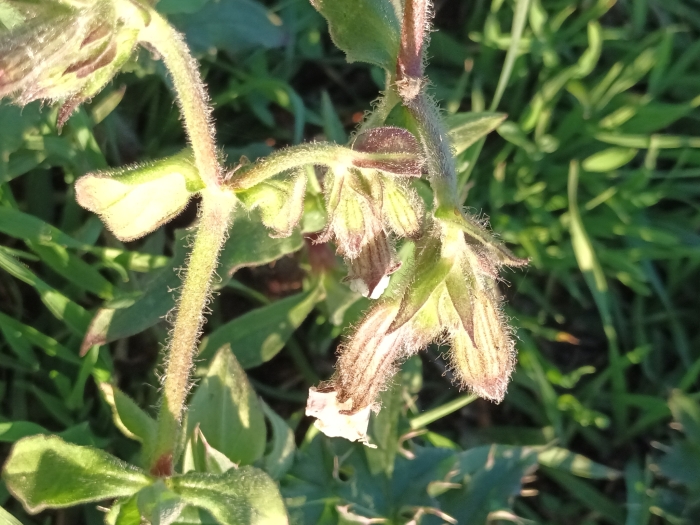Night-Flowering Catchfly
(Silene noctiflora)
Night-Flowering Catchfly (Silene noctiflora)
/
/

© alcesevropsky
CC BY-SA 4.0
Image By:
© alcesevropsky
Recorded By:
Copyright:
CC BY-SA 4.0
Copyright Notice:
Photo by: © alcesevropsky | License Type: CC BY-SA 4.0 | License URL: http://creativecommons.org/licenses/by-sa/4.0/ | Uploader: alcesevropsky | Publisher: iNaturalist |























Estimated Native Range
Summary
Silene noctiflora, commonly known as night-flowering catchfly, is an annual herb native to Europe and Asia, often found in open fields, roadsides, and waste places. It has been introduced to North America, where it is commonly seen in grain crops and other disturbed habitats. This species typically grows up to 31 inches tall and has a hairy, glandular stem. Its flowers, which open at night, are white to pale pink and emit a strong fragrance to attract nocturnal moths for pollination, an adaptation to its native ecology that involves night-time pollinator interactions.
Night-flowering catchfly is not typically cultivated for ornamental purposes due to its weedy nature, but it can be of interest to those creating a garden that supports nocturnal pollinators. It thrives in full sun to part shade and prefers well-drained soils. While it is not demanding in terms of water, it does best with regular moisture. In cultivation, it might be used in wildflower meadows or naturalistic plantings. Gardeners should be aware that it can self-seed prolifically and may become invasive. It is also susceptible to tobacco streak virus, which can be problematic in agricultural settings.CC BY-SA 4.0
Night-flowering catchfly is not typically cultivated for ornamental purposes due to its weedy nature, but it can be of interest to those creating a garden that supports nocturnal pollinators. It thrives in full sun to part shade and prefers well-drained soils. While it is not demanding in terms of water, it does best with regular moisture. In cultivation, it might be used in wildflower meadows or naturalistic plantings. Gardeners should be aware that it can self-seed prolifically and may become invasive. It is also susceptible to tobacco streak virus, which can be problematic in agricultural settings.CC BY-SA 4.0
Plant Description
- Plant Type: Herb
- Height: 0.5-1.5 feet
- Width: 0.2-0.5 feet
- Growth Rate: Moderate
- Flower Color: White
- Flowering Season: Summer
- Leaf Retention:
Growth Requirements
- Sun: Full Sun, Part Shade
- Water: Medium
- Drainage: Medium, Fast
Common Uses
Border Plant, Low Maintenance, Rock Garden
Natural Habitat
Native to Europe and Asia, often found in open fields, roadsides, and waste places
Other Names
Common Names: Night-flowering Catchfly, Nottingham Catchfly, Nightflowering Silene
Scientific Names: , Silene noctiflora, Cucubalus noctiflorus, Elisanthe noctiflora, Elsianthe noctiflora, Elsinanthe noctiflora, Lychnis noctiflora, Melandrium noctiflorum, Melandrium noctiflorum f. abnorme, Melandrium noctiflorum f. bessarabicum
GBIF Accepted Name: